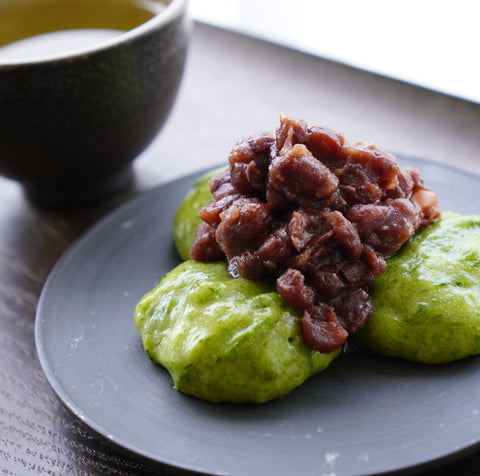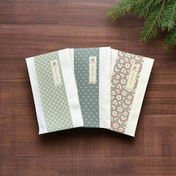What I found in the mountains
As I showed you in the previous article How to Forage and Cook Sansai (山菜) in Spring in Japan, I went to the mountains one day in April to pick and cook Fuki (Japanese butterbur).
I also found another edible plant there.

よもぎ(Yomogi)
It is called よもぎ(Yomogi) -Japanese mugwort. Yomogi grows naturally in all over Japan. Once you became familiar with it, you will begin to see it everywhere. You can find it by the rivers, in the hills and even in the city.
Yomogi has been with our lives from old days. As a folk remedy, Yomogi leaves have been used for stopping bleeding, asthma and warming the body. Dried Yomogi leaves can also be put in a bath and drunk as tea.
Also Yomogi is famous for the ingredient of もぐさ(Mogusa)-moxa for moxibustion.

もぐさ(Mogusa)
Enjoyable food with Yomogi in spring time
What Yomogi reminded me of the most is よもぎ餅 (Yomogi mochi) in Kansai region or 草餅(Kusamochi) as it is called in Kanto region is made from Yomogi leaves and mochi rice flour and it results sticky rice confection.
My grand mother used to make and sent us every year in May. Yomogi leaves are picked in spring as young and soft leaves are suitable for cooking. So Yomogi mochi was a special gift only in spring time. I felt it was spring when I saw Yomogi mochi in the parcel from grandparents and I enjoyed a spring special treat . It had a special aroma; fresh, relaxing and 青々とした香り(Aoao to shita Kaori) literally means "green and green" aroma.
You can buy Yomogi mochi in stores everywhere.

I usually buy them in stores. But this time I tried making Yomogi mochi myself !
How to make Yomogi mochi
I washed the picked leaves.

Boiled the leaves.

After soaking in fresh water and sieving, I grounded them with mortar and pestle.

At the same time, I steamed a mixture of 上新粉(Joshinko) -rice flour , sugar and hot water. It becomes Mochi.


Then I mixed the Mochi and ground Yomogi.


It is done when it is made into small pieces.

Here is the Yomogi mochi I made. Such a beautiful green color! I had them with あんこ (Anko)- red bean paste. What a nice combination of Yomogi mochi, Anko and a cup of green tea , especially shincha (2021 Spring Harvested Tea)!!
The other day I had them with きなこ(Kanako) - roasted soy powder ! It was also tasty.

The taste of Yomogi mochi reminded me of grandma's Yomogi mochi. I would say it is "Taste of handmade", more delicious and "energetic" taste than the ones in stores.
I am going to make Yomogi mochi again next spring.
Related articles:
Tea time with Anko, Homemade Japanese sweets !!
How to Forage and Cook Sansai (山菜) in Spring in Japan
What "Spring Bitterness" Brings to You in Japan
Today's Recommendation
You can make Anko with these beans.
Morita Beans: #3 Azuki Beans (300g)

『How to make Anko understanding in 1 minute』with English subtitles
Enjoy Shincha (2021 Spring Harvested Tea) !!
Kaneroku Matsumoto Tea Garden: Shincha - Limited Edition - Premium 特上新茶2021
3rd generation tea farmer Hiroki Matsumoto manages some 30 fields in the Kiriyama region of the Makinohara plain in Shimada, Shizuoka. He utilizes the UNESCO designated World Heritage agricultural tradition, Chagusaba, to cultivate his tea leaves. This tradition requires farmers to cultivate sasa grasses surrounding the tea fields, and use the grasses as fertilizer in the fields. Regular steamed tea leaves create a balanced sencha green tea.


